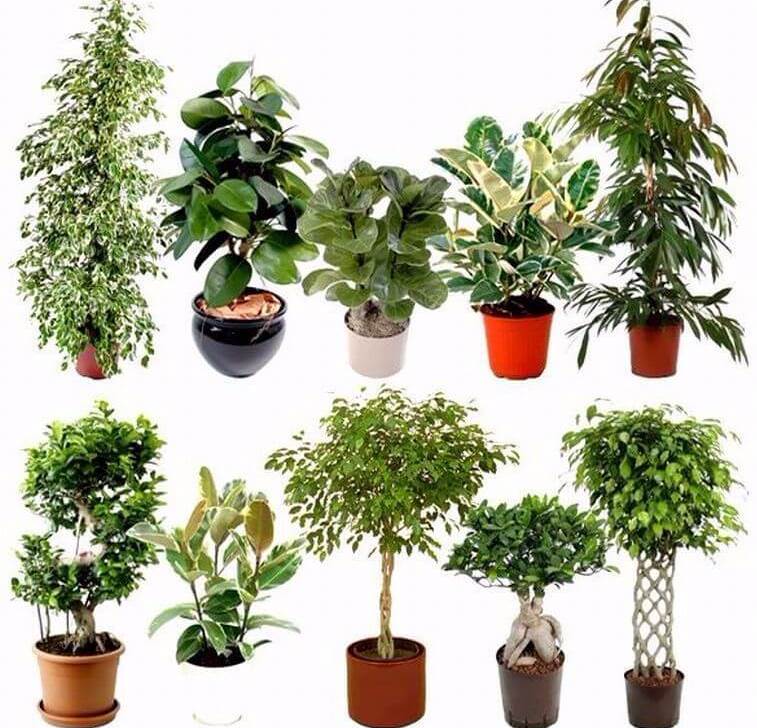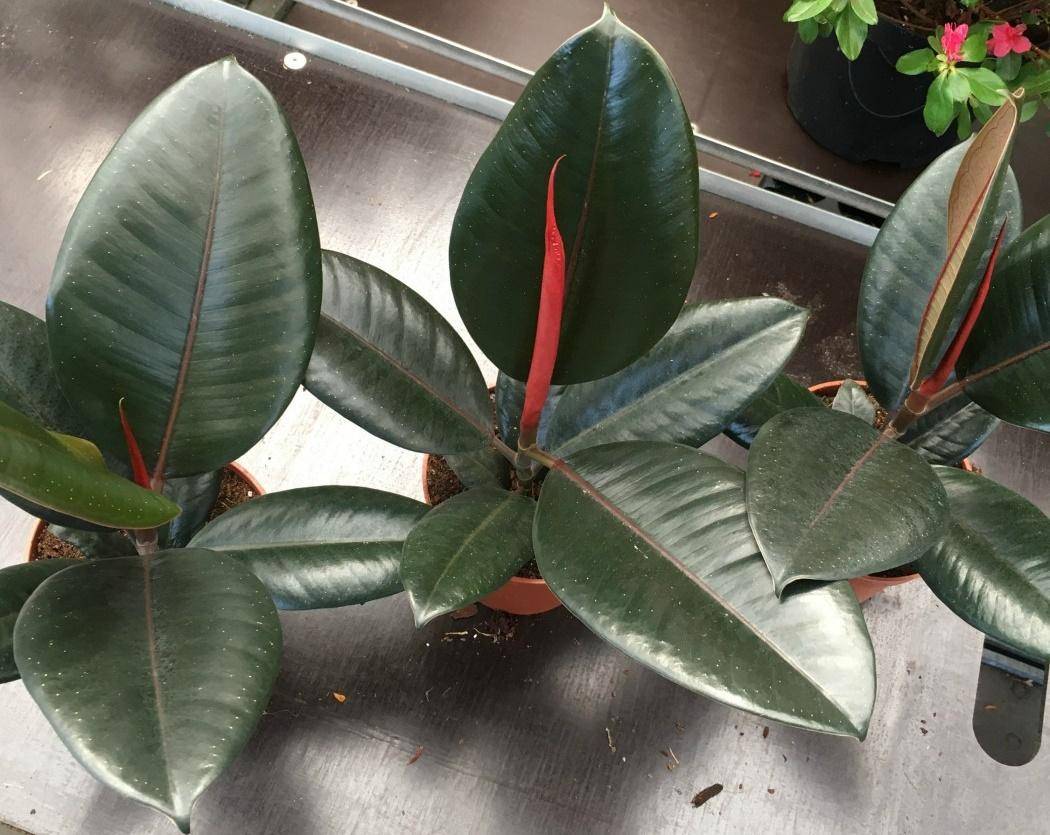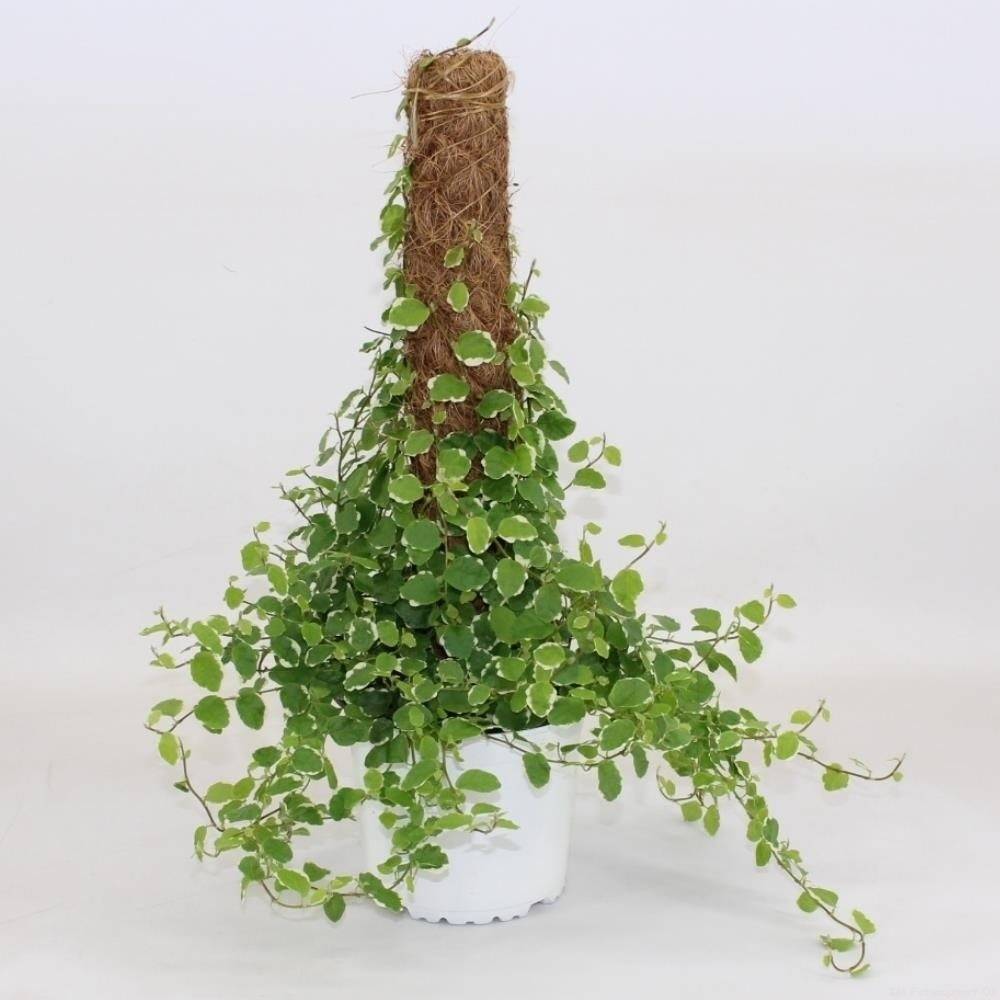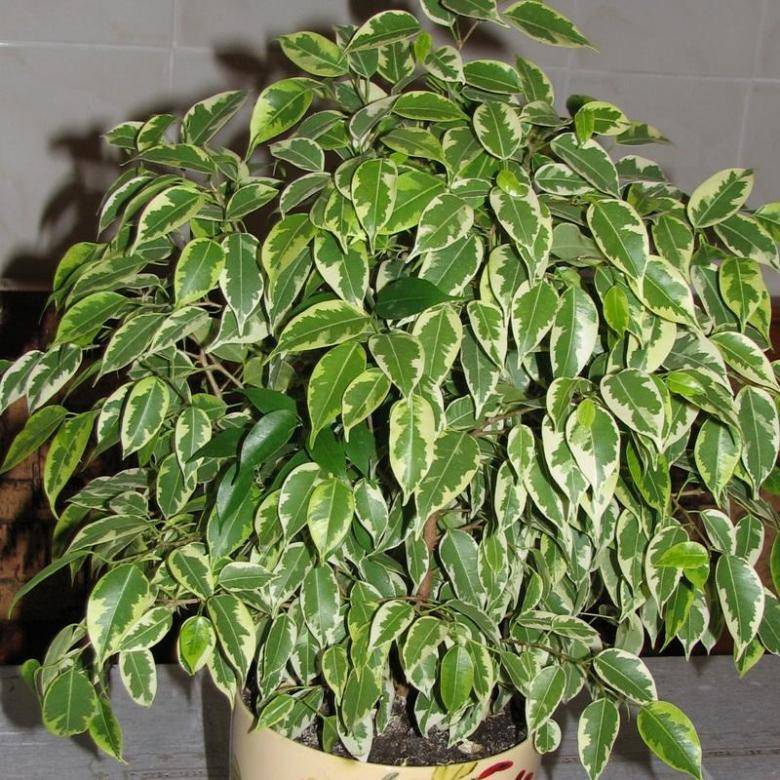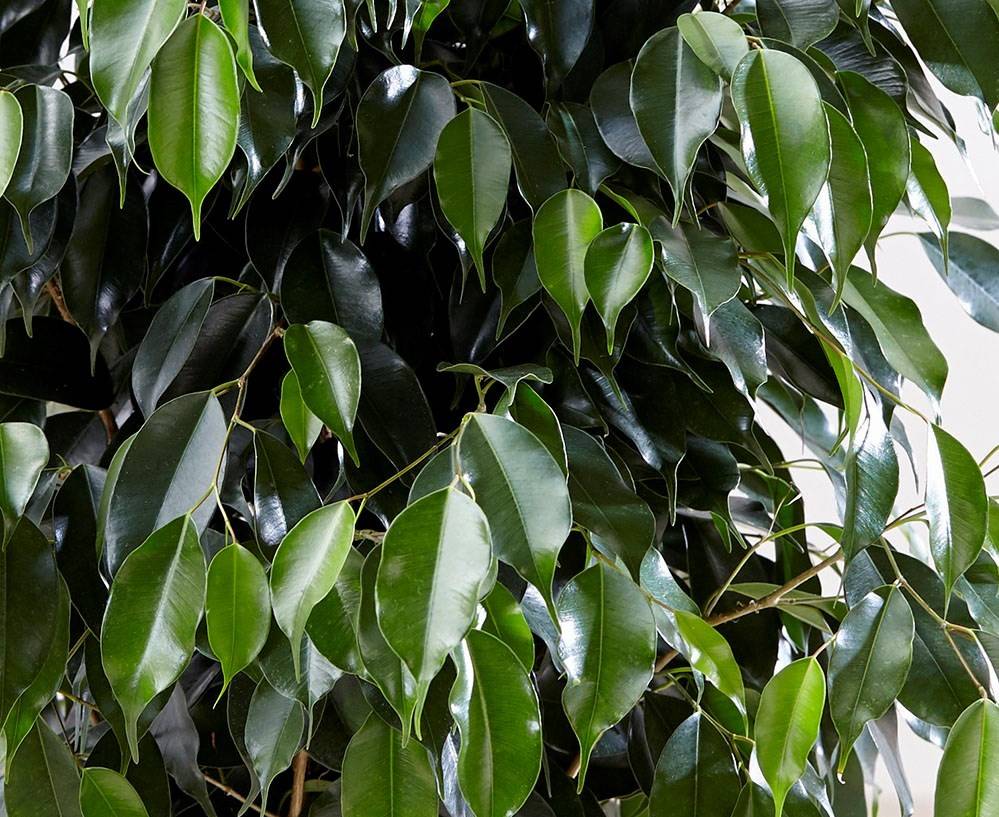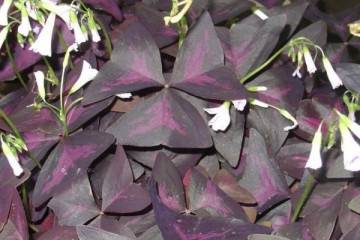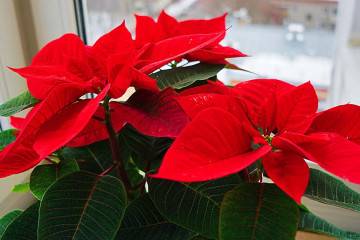Ficuses - varieties with small and large leaves, variegated and dwarf
Content:
Ficus is the most common plant that is found not only in almost every home, but also in various public spaces. Office, medical, childcare, office or shopping centers, almost in each of them you can find one of the varieties of this interesting flower. They can be large or compact, with wide or very small leaves. Sometimes it does not even occur to you that this or that plant is actually a representative of this genus. Love for a flower is understandable - it requires minimal maintenance, but it looks great at the same time, perfectly fitting into the interior of any room.
Ficuses: varieties for indoor breeding
The life form of these plants is diverse: trees, shrubs, vines. More than 2000 of their varieties grow in natural conditions. Their height can reach several meters. Household species of ficuses are more modest in size, but some of them are large enough for indoor flowers.
The natural area of distribution of the plant is the tropical forests of Malaysia and the Philippines. They are also found in the tropics of the Pacific and Indian Oceans, South Africa and some Asian countries. In some states, ficus is a sacred plant.
In nature, these plants not only bloom, but also bear fruit. The species grown in apartments cannot boast of the same. These are exclusively decorative deciduous plants. Indoor ficus leaves can be:
- monochrome green;
- variegated;
- small;
- large.
Ficus with large leaves
It often happens that even the owner himself does not know what kind of flower he is growing. He is attracted by the large leaves of the plant, and he knows that it is a ficus. And that is all. But, nevertheless, there are a lot of large-leaved varieties. After all, the species differ in appearance and conditions of detention, as well as in some characteristics.
Lyrata
Ficus Lirata in nature can reach over 30 m in height. The leaves of the natural variety grow up to half a meter long and about 40 cm wide. The glossy leathery leaf has a dark green color in the upper part and lighter in the lower part. At home, the flower is much more modest in size compared to its wild counterpart, but it stands out strongly against the background of other plants. It grows up to 2.5-3 m.Description of a houseplant:
- leaves are large, up to 30 cm in length, thick, fleshy dark green with a pronounced glossy sheen;
- in perennial specimens, the length of the leaf plate can reach half a meter;
- It is no coincidence that the plant got its name - its leaves are shaped like a lyre musical instrument. Some people compare them to a violin, and therefore also call it a violin tree.
The bushes that have lived for more than 7-10 years are very large and resemble real trees.This flower requires quite a lot of light as well as absolute loneliness. Do not look for company from other plants for him. And it looks so much better.
Moklame
Ficus Moklame in nature is a real giant, its height is more than 25 m. In indoor conditions, the tree grows to 1.5 m standard for domestic representatives of the Mulberry family. This is its maximum height.
Interesting in the description of this flower is a large number of aerial roots and layering, which is quite rare among cultivated species. Leaves are plain bright green, about 30 cm long.
Rubbery
This variety is the largest of the entire genus. In addition, this flower has a surprisingly long lifespan. It can be passed down from generation to generation without losing its decorative qualities. The tree has 1-2 trunks, on which are located very large oval-shaped leaves, casting a glossy sheen. After several years, the bush begins to branch.
This variety has a variety - Black Prince, which grows more slowly, but differs in the original dark, almost black, color of the leaf plate.
Initially, this is a monochrome variety, but it is so loved by flower growers that breeders have tried and bred its various hybrids, including variegated:
- Melanie;
- Robusta;
- Tynex;
- Belize.
Since these varieties contain less chlorophyll than the mother plant, they are even more unpretentious, but they also grow much slower.
Abidjan
Abidjan is a ficus that is loved precisely because of its beautiful, very large leaves. If the flower is comfortable, it grows rapidly both in height and width. Description:
- height up to 1.5 m;
- glossy leaves up to 25 cm in length, up to 17 cm in width, their color is dark green, on the lower part there are many bright burgundy veins;
- Abidjan can live up to 50 years with proper care.
By the way, he is picky about leaving, he needs good lighting and warmth. Does not bloom, reproduction in artificial conditions is possible only with the help of cuttings.
Dwarf ficus
Dwarf ficus is common among fans of home floriculture, it is especially popular among those who cannot afford to grow a large tree due to the small size of the apartment. Dwarf ficus is a perennial herb that is highly branching and has a large number of small shoots. Most often it is a creeping shrub. Doesn't have any special requirements for living conditions. Prefers bright places, but can calmly grow and develop in partial shade.
Pumila
The name of the ficus Pumila in translation from Latin means "small". The flower has 2 types of leaves:
- juvenile - small, round or oval;
- senescent ones are formed only at the end of adult shoots. They are larger and tougher than juvenile leaves.
Triangularis
Ficus Triangularis (triangular) is a compact bush with interesting triangular leaves that attach directly to the trunk. Its leaves grow up to only 8 cm, and their color depends on the variety. The growth is about 15 cm per year under good conditions.This species can all be covered with small flowers, starting from a very early age.
Ficus variegated
The variegated look includes many different varieties, each of which is loved by flower growers. The peculiarity of all these varieties is that their leaves are painted not in one color, but in two. Most often it is green and white.
Starlight
Starlight is a ficus that is one of Benjamin's ficus hybrids. Description of the plant:
- leaves are small, up to 5 cm in length, green with chaotically scattered light spots, some of them are entirely white;
- the edges of the leaf are slightly wavy;
- branches are flexible, slightly drooping, tolerate the pruning procedure well.
This variety perfectly cleans the air from toxic substances and saturates it with oxygen. Its effect on the nervous system has also been proven, the flower pacifies and soothes.
Ficus bengal
Bengal ficus (Banyan) is a large-leaved variety. Its leaves reach 20 cm in length, they are rather coarse, fleecy. Their multicolor gives the leaves a special beauty. In addition, the flower attracts with good growth, up to 25 cm per year, and decorative purple fruits resembling fig berries.
For its interesting color of the leaves, he received the nickname Tiger.
Anastasia
Anastasia is another Benjamin hybrid. It is quite easy to distinguish it from others. The flower has rather large (8 cm long and 4 cm wide) leaves of a dark green color, and only along the edges there is a light edging, and a similar vein in the center.
De Dumbbell
Ficus de Dumbbell stands out from other variegated counterparts. Its leaves are almost completely white with small blotches of small green spots. The flower looks very impressive, especially when it is already grown up and large.
Surprisingly, this bush goes well and gets along with other indoor plants. It will look good next to flowering plants, for example, with balsam.
Curly
Curly is a very interesting, peculiar variety. It seems that there is not a single identical leaf on it, but at the same time it seemed to contain absolutely all of Benjamin's hybrids. Of course, such a flower needs care and regular pruning and crown formation. Its leaves seem a little curly due to their curl in different directions.
Ficus with small leaves
Ficuses with small leaves are also common in apartments. They are loved by flower growers no less than large-leaved relatives. There are many small-leaved ficuses, and each of them is popular in its own way.
Kinky
This variety is also called a fig tree. Initially it has the shape of a bush, but as it grows, it turns into a tree. At home, it grows only up to half a meter. Description:
- straight trunk, covered with gray bark;
- spreading crown, branches drooping to the ends;
- the shape of the leaves is lanceolate;
- the maximum length of each leaf does not exceed 4 cm;
- the color of the leaf plate is green with light or light green edging;
- flowering at home does not occur.
Microcarpa Ginseng
Ficus microcarp is one of the most interesting representatives of its kind, grown in artificial conditions. In retail outlets, it can be called differently:
- ficus microcarp;
- ficus microcarpa Ginseng;
- ficus Ginseng;
- dull.
These are all names for the same flower. At home, it can grow up to 1.5 m, it differs from many other relatives by its huge aerial roots. The plant rests on them and stands proudly in its flowerpot. Bonsai can be easily formed from it. The annual growth is slow, does not need special care, so even a beginner can cope with growing it.
Daniel
Ficus Benjamina Daniel is a typical representative of beautiful decorative deciduous trees. In an apartment, the maximum height is 2 m.Description:
- the stem is straight with a lot of lateral branches;
- lanceolate leaves, glossy dark green, there are variegated hybrids;
- the length of the leaf plate is 5-6 cm, the width is 3-4 cm.
Ficus Daniel is unpretentious, it does not need special growing conditions, it comfortably exists almost everywhere. Plant care is minimal.
Lyre Bambino
Ficus lyre Bambino is one of the hybrid varieties of the Librato species. This is a miniature compact variety, the maximum length of the leaves of which is only 15 cm. Another feature of it is that it branches beautifully. In all other respects, it is completely similar to its large-leaved relative. It resembles the cyanistipul variety.
It becomes clear that it is impossible to give an unambiguous answer to the question of what a ficus looks like. The huge number of varieties does not allow formulating a single description of the flower. The only thing they have in common is ease of care. This plant is not exotic at all, you do not need to search Internet sources to find this or that variety. They are all on sale, and even a beginner will be able to cope with their cultivation.
